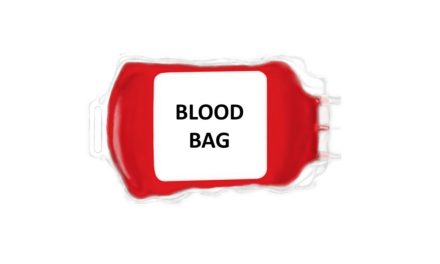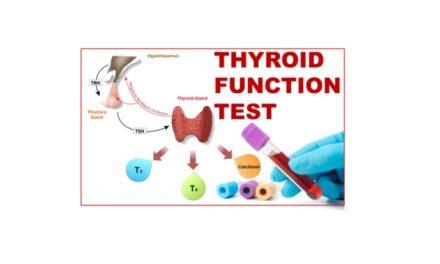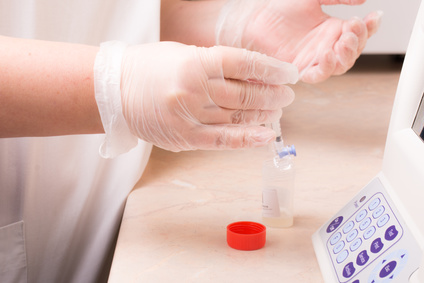Author: Dr Swathi Sahni
Editor: Dr Vijay Shankar S
1. Which sample of urine is suitable for routine examination?
Fresh sample collected anytime of the day is suitable, however first voided early morning urine sample is preferable as it is most concentrated and has acidic pH in which formed elements ( cells and casts) are usually preserved.
2. Define oliguria, anuria, nocturia and polyuria?
a. Oliguria: urine output, less than 1 mL/kg/hr in infants, less than 0.5 mL/kg/hr in children, and less than 400 mL/day in adults
b. Anuria: cessation of urine flow or less than 100 ml/day in adults
c. Nocturia: An increase in the nocturnal excretion of urine
d. Polyuria: urine volume greater than 2.5 L/day in adults and 2.5–3 mL/kg/day in children.
b. Anuria: cessation of urine flow or less than 100 ml/day in adults
c. Nocturia: An increase in the nocturnal excretion of urine
d. Polyuria: urine volume greater than 2.5 L/day in adults and 2.5–3 mL/kg/day in children.
3. What are the different types of urine specimen?
a. Random collection- for routine screening
b. Fasting and postprandial – for diabetes mellitus
c. 24 hr sample- for quantitative tests
d. Midstream clean catch urine- for culture as well as routine
e. Catheterized- for culture
f. Suprapubic aspiration – for bladder culture.
b. Fasting and postprandial – for diabetes mellitus
c. 24 hr sample- for quantitative tests
d. Midstream clean catch urine- for culture as well as routine
e. Catheterized- for culture
f. Suprapubic aspiration – for bladder culture.
4. How do one collect urine in infants?
Soft/plastic bags attached to genital area by skin adhesives can be used to collect urine in infants.
5. What is a 24-hour urine sample?
After getting up in the morning, first morning sample is discarded. All subsequent samples during the rest of the day and night is collected in a large container (clean container of 2 litre capacity). The last sample is the next day’s first morning sample. Urine should be preserved at 4-6-degree c during the period of collection and then immediately transported to laboratory. This is used for quantitative estimation of proteins and hormones.
6. What are the methods of preservation of urine and amount of preservatives used?
a. Refrigeration at 4-6 degree C for 8 hours
b. Toluene:1 ml per 50 ml of urine. It acts by forming a surface layer and it preserves the chemical constituents of urine.
c. Formalin: 6-8 drops of 40% formalin per 100 ml of urine. It preserves rbcs and pus cells.
d. Disadvantage is that it gives false positive test for sugars.
e.Thymol: 1% of thymol is used. Disadvantage is that it gives false positive for proteins.
f.Acids: hydrochloric acid, boric acid and sulphuric acid.
b. Toluene:1 ml per 50 ml of urine. It acts by forming a surface layer and it preserves the chemical constituents of urine.
c. Formalin: 6-8 drops of 40% formalin per 100 ml of urine. It preserves rbcs and pus cells.
d. Disadvantage is that it gives false positive test for sugars.
e.Thymol: 1% of thymol is used. Disadvantage is that it gives false positive for proteins.
f.Acids: hydrochloric acid, boric acid and sulphuric acid.
7. What are the changes that can occur in standing urine at room temperature?
a.Increase in pH
b.Formation of crystals
c.Loss of ketone bodies
d.Decrease in glucose
e.Oxidation of bilurubin to biliveridin
f.Oxidation of urobilinogen to urobilin
g.Bacterial proliferation
h.Disintegration of cellular elements.
b.Formation of crystals
c.Loss of ketone bodies
d.Decrease in glucose
e.Oxidation of bilurubin to biliveridin
f.Oxidation of urobilinogen to urobilin
g.Bacterial proliferation
h.Disintegration of cellular elements.
8. What is the normal value of specific gravity and what does it signify?
Normal values of specific gravity is 1.003-1.030. it signifies the relative mass density. Specific gravity of urine is a measure of concentrating ability of kidneys and is determined to get information about its tubular function.
9. What are the factors affecting the specific gravity of urine?
Solute and temperature affect the specific gravity. Specific gravity increases as solute concentration increases and decreases when temperature increases.
10. What are the methods of estimation of specific gravity of urine?
The specific gravity can be measured by
a. Urinometer : less accurate method. it needs to be corrected for temperature. If the specimen is cold, 0.001 must be subtracted from the reading for every 3 degreeC that the specimen temperature is below the urinometer calibration temperature.Conversely, 0.001 must be added to the reading for every 3degreeC that the specimen measures above the calibration temperature.
b. Refractometer: determines the concentration of the dissolved particles in the specimen by measuring the refractive index. Advantages are, only one or two drops of urine is sufficient and temperature correction not necessary.
c. Harmonic oscillation densitometry: the principle is – principle that the frequency of a sound wave entering a solution changes in proportion to the density of the solution. Advantages are that temperature corrections are not necessary.
a. Urinometer : less accurate method. it needs to be corrected for temperature. If the specimen is cold, 0.001 must be subtracted from the reading for every 3 degreeC that the specimen temperature is below the urinometer calibration temperature.Conversely, 0.001 must be added to the reading for every 3degreeC that the specimen measures above the calibration temperature.
b. Refractometer: determines the concentration of the dissolved particles in the specimen by measuring the refractive index. Advantages are, only one or two drops of urine is sufficient and temperature correction not necessary.
c. Harmonic oscillation densitometry: the principle is – principle that the frequency of a sound wave entering a solution changes in proportion to the density of the solution. Advantages are that temperature corrections are not necessary.
11. What are the causes of increased specific gravity in urine?
Diabetes mellitus, nephritic syndrome, fever and dehydration.
12. What are the causes of decreased specific gravity in urine?
Diabetes insipidus, chronic renal failure (low and fixed at 1.010) due to loss of concentrating ability of tubules and compulsive water drinking.
13. What information does urine color give?
a. Pale yellow- normal
b. Dark yellow- concentrated
c. Orange- Bilirubin or certain drugs like nitrafurantoin
d. Green – in pseudomonas infection
e. Pink to red – rbcs, consumption of beet, hemoglobin and porphyrins
f. Brownblack – alkaptonuria.
b. Dark yellow- concentrated
c. Orange- Bilirubin or certain drugs like nitrafurantoin
d. Green – in pseudomonas infection
e. Pink to red – rbcs, consumption of beet, hemoglobin and porphyrins
f. Brownblack – alkaptonuria.
14. What causes chyluria and how to confirm it?
Chyluria (milky urine) occurs because of rupture of dilated lymphatics in the bladder or in the kidney and the lymph mixes with urine. Dilated lymphatics may be because of filariasis or abdominal tumors.
Confirmation of chyluria is carried out by:
Mixing 1 ml of urine with 1 ml of sudan III stain and take 1 drop of it on the slide and place the coverslip, orange colored fat droplets confirms the presence of chyle.
Taking 1ml of urine and adding 1 ml of ether-chloroform mixture. Milkiness disappears as the fat of chyle dissolves in ether chloroform.
Confirmation of chyluria is carried out by:
Mixing 1 ml of urine with 1 ml of sudan III stain and take 1 drop of it on the slide and place the coverslip, orange colored fat droplets confirms the presence of chyle.
Taking 1ml of urine and adding 1 ml of ether-chloroform mixture. Milkiness disappears as the fat of chyle dissolves in ether chloroform.
15. What leads to cloudy urine?
Urine is cloudy because of amorphous phosphates, urates, pus cells and bacterial contamination.
16. What is the significance of urine odor?
Normally it is slightly aromatic not much significance, however few characteristic odors are as below
a. Foul smelling , ammonia like seen in bacterial decomposition
b. Fruity odour in ketonuria
c. Mousy odour in phenylketonuria
d. Maple syrup in maple syrup urine disease.
a. Foul smelling , ammonia like seen in bacterial decomposition
b. Fruity odour in ketonuria
c. Mousy odour in phenylketonuria
d. Maple syrup in maple syrup urine disease.
17. What are the causes of acidic urine?
The pH ranges from 4.5 to 8, and it has to be correlated with clinical findings
a. Acidic urine is normally found in starvation, dehydration, diarrhea, diabetes or in high protein diet
b. Alkaline urine is found in hyperventilation, renal tubular acidosis and if the urine is kept for long( improperly preserved specimen).
a. Acidic urine is normally found in starvation, dehydration, diarrhea, diabetes or in high protein diet
b. Alkaline urine is found in hyperventilation, renal tubular acidosis and if the urine is kept for long( improperly preserved specimen).
18. What are the causes of proteinuria?
a. Prerenal: multiple myeloma where there is markedly elevated levels of Bence Jones protein which is a low molecular weight protein and is excreted in urine
b. Renal: glomerular diseases, tubular diseases.
b. Renal: glomerular diseases, tubular diseases.
19. What is benign proteinuria?
Transient and not of pathologic significance, usually found in people with vigorous exercise, high fever and even exposure to cold.
20. Why should urine be acidified before testing for albuminuria (if urine is alkaline)?
Phosphates precipitated in alkaline urine, while in acidic urine proteins are precipitated readily bay various methods.
21. What is orthostatic proteinuria?
Also called postural proteinuria, usually found in young adults. Proteinuria seen after prolonged standing and disappears in horizontal position. In vertical position, there will be increased pressure on renal vein and is thought to be the cause.
22. What is microalbuminuria (micro proteinuria)?
It is defined as urinary excretion of 30-300 mg/24 hrs of albumin in urine. Sensitive strip tests are available to detect the presence of very low amount. This test is of use in identifying cases of early kidney damage in diabetes mellitus and it is an independent risk factor for cardiovascular disease in diabetes mellitus.
23. What causes myoglobinuria?
Myoglobin in urine due to muscle destruction. seen in trauma, crush syndromes, extensive excretion and alcoholism.
24. In which disease both albuminuria and Bence Jones proteins are present?
Myeloma kidney damages glomeruli and tubules resulting in albuminuria and BJ proteins as part of disease process- multiple myeloma.
25. In the heat test of proteins, why is only the upper part of the tube is heated?
On heating the upper part, the proteins flocculate and haziness is produced which is compared to the lower unheated part which acts as control. In addition convection currents are not produced which may disturb the haziness. On the other hand, if lower part of urine is heated, convection current are set up which make the whole tube hazy and traces of proteins may be missed since there is no control.
Pages: 1 2






